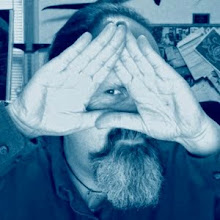
Joseph Cornell
Earlier this year, we made abstract relief sculptures out of wood. In this project, we will be exploring and making some different types of assemblage sculptures.
We will begin by looking at some assemblages by Joseph Cornell. Cornell was one of the pioneers of assemblage, and remains one of the most influential artists for this type of art. We will also look at the work of several other artists-- some that are directly influenced by Cornell, and some others that are not.
After you look at the images below, read the questions at the bottom of this post, and answer the questions by posting a comment.
What we will be doing in class:
You will make an assemblage sculpture. It will take one of two forms:
1) in a wooden box, similar to the work of Joseph Cornell
2) freestanding / full round
Themes: you must choose one of the two themes for your sculpture:
1) symbolic self-portrait
2) good vs. evil
You will be receiving a handout with the specific details of this assignment.
(click on images below for a larger view)
Joseph Cornell

1.

2.

3.

4.

5.
Work by artists who have been influenced by Joseph Cornell

6.

7.

8.

9.

10.

11.

12.

13.

14.

15.
Freestanding / Full Round Assemblage
(by various artists)

17.

18.

19.

20.

21.

22.

23.

24.

25.

26.

27.

28.

29.
*****
Questions:
Answer these questions by making a "comment". Be sure to put your NAME on your comment!
1) What are some of the main features or characteristics of Cornell's assemblages (images 1-5)?
2) Consider the work of the artists influenced by Cornell, as shown above (images 6 through 15). Compare this work to Cornell's. What similarities do you see? What are some differences?
3) Select one of the Freestanding / Full Round Assemblage images that you like (17-27). Give the number of the piece, and then describe the piece and explain why you like it. Be specific-- a comment such as "I like it because it's really sweet" is not acceptable.
4) Off the top of your head, what kinds of things might you look for to use in your assemblage?
5) Where are some places you might look to find objects for this project?
6) Bonus question-- copy and paste links to a couple images of assemblages that you like, and explain what you like about them (they should be either similar to work by Joseph Cornell or freestanding / full round assemblages, as shown above).
Again, remember to put your NAME on your comment!

